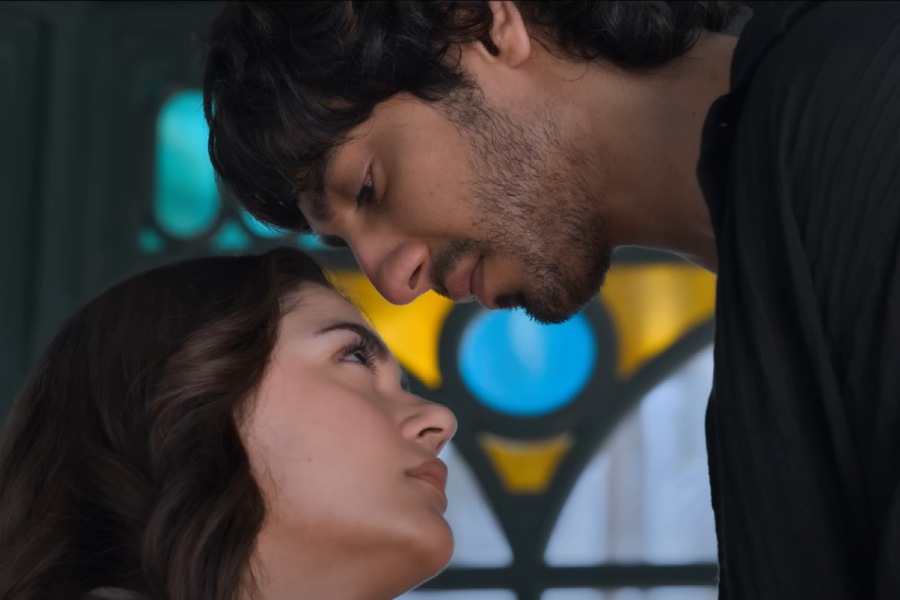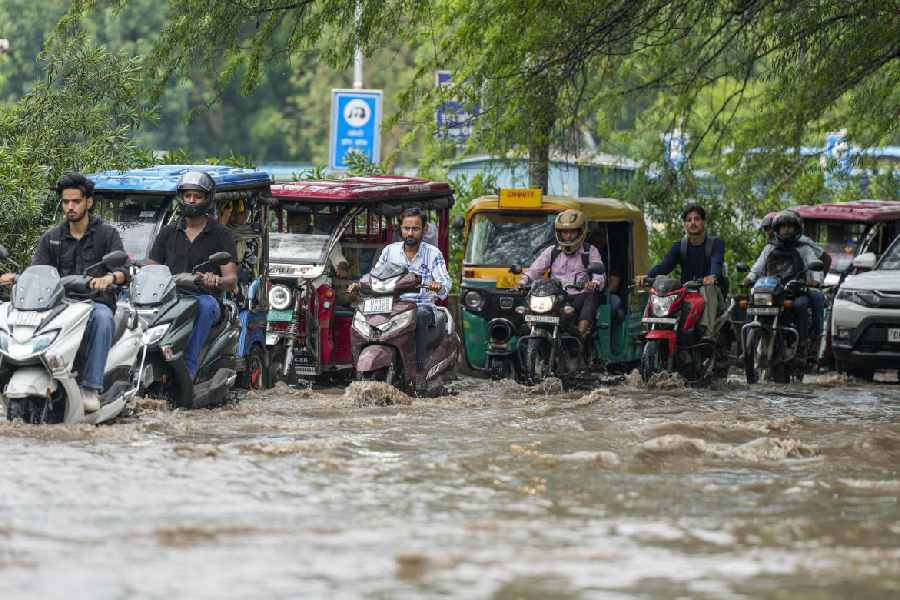The chief attraction of the day on the Grand Road was the three chariots of Lord Jagannath and his siblings. However, there are also other miniature chariots with their own history.
The 14-wheel, 15-ft high rath from Balisahi near the Jagannath temple is one rath, which has been part of the yatra for nearly three centuries now.
In terms of the architecture, colour and design, it resembles the chariots of the 12th century temple of Lord Jagannath.
“The festival has been part of our family tradition. Though it costs us no less than Rs 50,000 we get the timber from our own plantation on the city outskirts,’’ says Rajat Pratihari of Balisahi, the man behind the show.
“I know that this is being celebrated since the days of erstwhile ruler Ramachandra Dev. We heard that once the then ruler got upset and sent his men to seize the rath. They came and took the miniature rath to the royal palace, but later the king was pacified and allowed it to roll again with some restrictions on size and number of wheels,’’ said Pratihari.
The main carpenter of the miniature rath, the Balisahi Rath, is Baishnab Maharana, who also builds rath for the deities of the main temple. He said: “For generations, we are designing and constructing the miniature rath in this lane. It has become a tradition of sorts even for our families and we look forward to the event eagerly. I accord equal importance to this rath.”
The tailor of this miniature rath, Basudev Mohapatra, is also a tailor of the three chariots of the Jagnnath trinity. “I have equal dedication and love for both raths and as the involvement of little kids and people of this lane in this special festival is interesting,” he said.
The miniature rath of Balisahi starts from Pratihari’s house, which has a mini temple of the Gods inside their compound. The rath reaches Grand Road and goes to Gundicha Temple, which is at Dasavatar Math near the Mausimaa temple. There is another rath, which originates from Bada Sankha Nua Sahi.
Both elders and children pull the rath from Balisahi to Gundicha Temple. The deities also stay there for nine days and after that return to the temple in a bahuda yatra or return journey.
Sahil Panda, who studies in Class III at Tapoban Adarsh School, is always eager to pull this rath with friends. “We all wait for the special day. We watch the yatra on Grand Road and then pull the chariot in our own lane,” he said.
Apart from miniature raths, a number of ‘baby raths’ are also seen dotting Grand Road and other lanes and by lanes of the holy city on the festival day. Most are symbolic.











